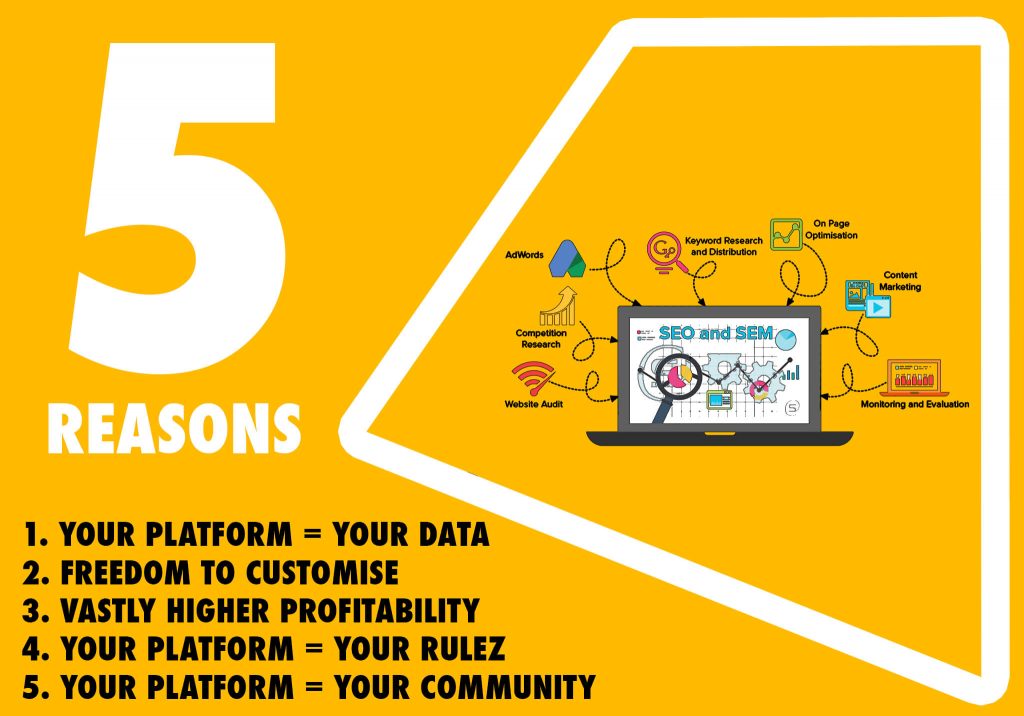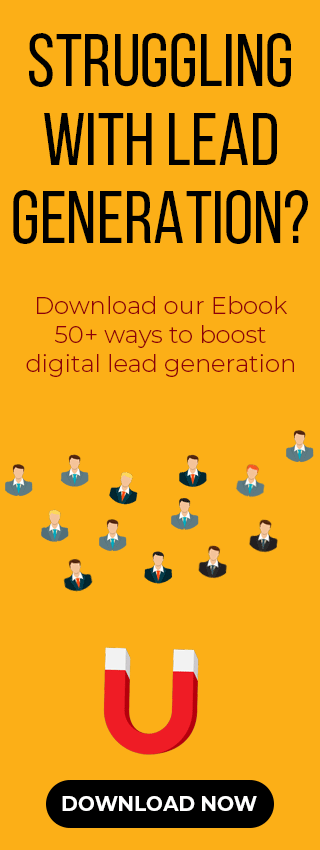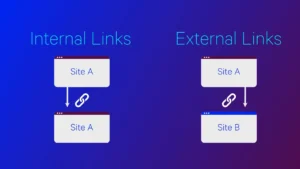Note: This post was sparked by a conversation with a recent client who wanted us to devise a digital business strategy for a new shoe brand they were launching. They did not want their own website, but wanted to sell purely on Amazon and other third party marketplaces.
This wasn’t the first time I was having this conversation – we often get several clients who tell us they don’t want a website because their marketing is led on third party platforms. For ecommerce sites, it usually happens on Amazon, Flipkart, Myntra etc. For Food brands in India, Zomato and Swiggy are the obvious choices. For Hotel brands, its Oyo, Makemytrip, etc. Why build your own platform when there are market-leading third party platforms available? The simple answer is – you should have your own website / ecommerce store / platform. Although there are several answers to this question, I will share my view points on this.
1. Your Platform = Your Data.
Owning your Data.
The most important reason for you to design your own platform is the data! We are all hearing phrases like “the money is in the list”, “data is the new oil”, “protect my data”, etc. Data is perhaps the most under-utilised, under-appreciated, and under-monetised asset that a brand owns. Most small companies fail to collect, clean and utilise this data for their brand’s growth. Your customer data is an extremely precious resource. Think about it – how much customer data does an external service provider like Zomato or Flipkart or Amazon give you? I was speaking to a close friend who runs cloud kitchens on Zomato and Swiggy, etc. and I asked him what all customer data he got. Zilch! Why was I not surprised?
The single biggest benefit of running your own e-commerce store and setup your own marketing channels is that you start collecting precious user data. This data can then be used for several interesting use cases.
- You can setup email campaigns
- You can setup marketing automations
- You can simply call them up and collect feedback
- You can create brand evangelists or brand ambassadors
- You can create personal relationships with your customers
- The possibilities explode!
Yes, a third party platform offers several advantages to a business, but only in the short term. If you’re in business for the long term (and I would highly suggest you be), your own website, or e-commerce store, should always be top priority. Have as much control as possible. Yes, it will take more time and money, and you might not have all the control immediately, but that should be part of your vision. It’s for a reason that giants like Apple like to control everything – it gives them lots of options to play with. If you’re dependant on a third party as a core driver of business, you will consistently face problems like this, this, this or this. Which leads me to point number 2.
2. Freedom to Customise
If you’re in business, solving problems, you will soon realize that third party platforms and marketplaces don’t give you a lot of control. They have set formats, templates, systems. It’s what enables them to scale.
A point will come in your brand’s growth journey when you start wanting more control over the user experience. That’s when you will hit the limit. That’s when you’ll wish you had your own platform going on. But that point will probably come 2-5 years after you begin your brand. Now imagine you having to start your own platform then, collect all the feedback, iterate and improve, and go through the cycle of growth again. Apart from that, you would want to pack in years of learnings in your own platform. Which would mean a heavy investment. That’s putting a lot of pressure and risk on yourself!
A vastly better approach is to do build your own platforms, step by step. Slowly. Smaller investments, done regularly, lead to much higher returns. Look at the mutual fund industry. SIPs. Consider your own website or digital platform as a mutual fund scheme where you’re putting in SIPs each month/year. It won’t hurt your pocket, and you can continuously collect market feedback, or stakeholder feedback to gradually develop a website or platform which is used widely. Our focus at Modifyed has always been to offer a leaner, agile and cost effective approach. After we build out the initial version with basic features that an organisation needs, we move to a more flexible and continuous process of pushing out features and updates. That way, a client can get it exactly what they want at a specific point in their growth journey. Read more on the agile and waterfall approach to software development.
3. Vastly Higher Profitability
The simplest argument I hear from my clients is the money. Their own ecommerce store is more expensive to start, run and maintain. For smaller transactions and orders, I agree. But the 20-40% commission that is paid to other marketplaces in exchange for each sale, is much large piece of the pie when sales increase. And if you’re designing your marketing strategy for a small revenues, then you’re selling yourself short. You might as well go and start an offline store!
A brand is much better off investing the 20-40% margin charged by Amazon, in building their own marketing, advertising and branding channels. Perhaps I will do the math on this in another post, but trust me when I say, that the ROI you will derive by focussing more on building your own channels, versus building only on third party channels tends to be massive, with the passage of time.
To give a very weird argument, building your own platform is like raising your own baby. Agreed, raising your own child can be a nuisance, and you’re better off playing with the neighbours kids. You get to enjoy all the cuteness and fun, and none of the diaper-cleaning, potty-training business.
I strongly believe that any platform such as a website, mobile app, or web application must directly be connected to profitability. Only if a platform is profitable for the businesses owner, can the following things become true:
- It be considered an asset, instead of a liability. We have seen enough corporate CRMs and ERPs turn into major money drainers, with expensive maintenance costs, development costs, training costs and whatnot.
- The businesses owner want to continue spending more money on it to grow
- The platform remains a fundamental part of business strategy, instead of a secondary tool.
- You can build in exciting profit boosting conversion points in the entire sales funnel, such as tripwires, lead magnets, upsells, downsells, loyalty programs, memberships sites and whatnot. All profit boosting, revenue increasing ideas.
Having your own platform truly gives you freedom to build it in a way which fosters more profitability. You can monetise the data through re-engagement campaigns, you can monetise the platform by selling more products within, you can do brand partnerships, influencer partnerships, invest in brand enhancing design and communications. It’s your baby. You can dress it up, play with it, train it in all possible ways so that you can make a great impact.
4. Your Platform = Your Rulez
Putting your brand in the hand of another brand – is that a good idea?
Why would you want to build your dream mansion on rented property, especially if you know the landlord is evil (always the safest assumption to make when dealing with tech giants, in light of the issues Big Tech is facing in America)? I made this mistake with Bollykings, my first website and blog which I built way back in 2008/2009. My entire marketing was dependant on Google, I was heavily into SEO at that point, and was driving nearly 95% of my website traffic from Search. It was a sweet ride, and I was dominating SERPs for all my main keywords, until 2014, when Google launched Panda and then Penguin. Overnight, I lost nearly 80% of the search traffic.
My entire business folded. I cried so much. (Back then I hadn’t developed the steely perseverance required to make a business successful, it was more of a passion project to keep myself busy during college).
It was then that I vowed, never to put all my marketing eggs in 1 basket. Had I focussed on building multiple sources of traffic, I would still have an active movie blog today! (perhaps a career as a Bollywood journalist/film critic and eventually a writer). But ah well, it was a very important lesson that I picked up quite early – never depend on a third party platform for all your business. It can contribute about 30-40%, but never 100%. I don’t know what the right ratio is, but atleast 30%-50% of your business should come purely from your own brand’s marketing magic, if not 80%.
By the way, this is something many business owners still face today. A brand selling camera tripods on Amazon US crossed 3.5 million USD in sales. Amazon copied the product, calling it AmazonBasics Tripod, and banned the original seller.
Don’t get me wrong – I am a huge fan of building strong partnerships, and collaborations. I truly believe that a business cannot exist in isolation. But while building a brand, having your own identity is key to success and peace of mind.
5. Your Platform = Your Community
No website or digital platform is complete without its own thriving community. A platform without humans is like a body without life. It’s dry. It’s just code then. Code without people is quite boring. When I first used Facebook back in 2003/2004, it was my first tryst with a computer program that had an active community with people I knew! I guess that’s what made Facebook, and today Whatsapp, so wildly successful. Without humans using, interacting and finding value from a platform, its absolutely incomplete.
Now ask yourself this question – would you want YOUR community to exist in someone else’s world? Obviously, no!
If you build your brand on someone else’s platform, you’re actually, building your community, your tribe, on that person’s platform. That’s a bad business model! And asking users to change their platform is super difficult! Which is the reason why most brands end up not having their own platforms.
Instead, focus on building your own community and leverage 3rd party platforms to increase the reach of your platform. I quite admire how Miam’s Patisserie has built a great community on Instagram, and are constantly funnelling customers to purchase from their own website. A perfect win-win!
Conclusion
The best approach is to first ideate and plan out your own platform and community, and then spread to other platforms, eventually pulling people from those platforms to your own platform. Have a broad, long term vision for it. And start building it, today. Not tomorrow. Not after 3 years. Start with 1 feature, 1 goal, 1 simple forum. Keep building on top of it, and before you know it, you will have your own ecosystem. This truly is the best way to build your own digital brand.
Call to Action
If you liked (or didn’t like!), what you read, please share with 1 friend (or many friends) who need to hear this. Please share your valuable feedback by commenting below or directly reaching out to me. Finally, you can also share your email ID using the subscribe form below, to subscribe to our blog and get notified of new posts and updates about the company we are building.
Thank you for spending your valuable time with us!





